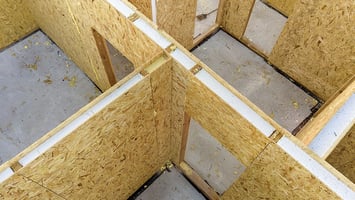Modular construction is a big buzzword within the industry right now—especially since housing prices are on the rise and buyers are exhausting every option in the search for a new home. People everywhere are wondering if modular construction might be the answer to rapidly build the homes needed to meet demand.
Modular may or may not be the answer, but one thing is certain: If you’re a builder, there are a lot of opportunities out there for you right now if you’re considering these builds. And that means you’re going to need tools like BECK’s F20A 92-32 Nailer to keep up. Let’s take a look at the pros and cons of modular construction to see what solutions it may offer.
Modular Construction: What is It?
Historically, modular construction had a pretty bad reputation—and that’s because it was associated with things like double-wide homes or trailer homes, which have a perception as being of lesser quality than your traditional stick-built home.
These days, the definition of “modular” is evolving. While the old definition still applies, it’s also expanding to refer to other types of relocatable buildings (like shipping container homes, for example), as well as permanent modular construction.
Permanent modular construction is probably what you’ll encounter most often. This is a type of construction in which the home is built as a series of assemblies—walls, floors, roof, and so on. While there are lots of ways to go about building these assemblies, sometimes manufacturers use mass timber construction to create solid, cross-laminated wall and floor panels. Then the panels are all delivered to the building site and put together.
The Good
With new products being developed, there are quite a few advantages to modern modular homes—especially permanent ones.
- This building method is fast. Creation of the wall, floor, and ceiling assemblies happens in factories where processes and automation can speed things up. Once on-site, the panels can all go together in less than half the time of a traditional stick-built home.
- Modular construction is typically cheaper. Factory producing assemblies reduces their production costs, plus labor costs are much lower.
- The process produces a lot less waste, which is both more environmentally friendly and more sustainable since it reduces demand for raw materials.
- Acoustics, interiors, insulation, and overall quality can be a lot better—and that’s because production in a factory setting allows for overall better engineering and quality control to address these factors.
- Not only is this type of construction faster, it’s also less prone to delays since weather is less of a concern during the shortened building phases.
The Bad
As with anything, there are always a few drawbacks. Here are some of the big ones to consider:
- Transportation of materials can be an issue since pieces may be large and bulky. This is doubly true if there is a long distance between the factory and the build site.
- There are size limitations, too. Assemblies or modules need to be able to fit on trucks—and that often means rooms will need to be smaller.
- Modular building has some design limitations. With a traditional stick-built home, if an architect can design it and an engineer approve it, you can build it. Factory-built structures can only be modified so much. If a design change means the pieces can no longer be made on an assembly line, you won’t be able to produce it.
- Financing can be more difficult for the owner. Modular homes may not qualify for construction loans, and buyers can’t secure traditional mortgages until construction is completed.
Building Modular? Choose BECK Tools
Even though this building method reduces a lot of the construction work that you’d normally do on site, there will still be quite a lot left to do—and BECK’s F20A 92-32 top-loading Nailer will prove useful on the job. This is a nail gun that fires medium wire staples up to 32 mm leg length, which makes it ideal for manufactured home construction, baseboard installation, and more. It gives you a full sequential trigger that maximizes safety, and an optional switchable trigger so that you can work faster. Be sure to check it out!
.svg.png)

